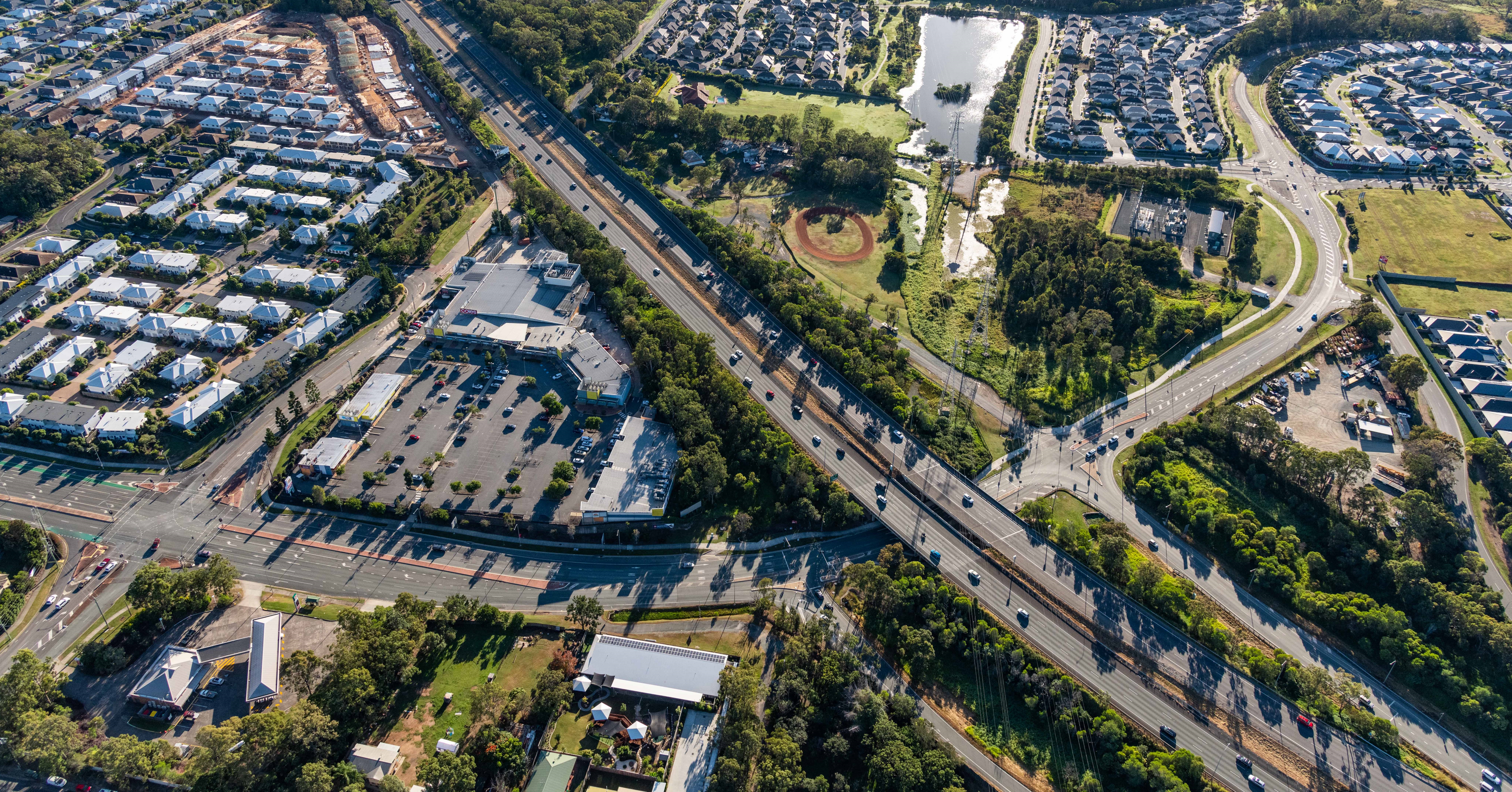Project Description
The project is part of the NSW Government’s the Transport Access Program, which aims to provide a better experience for public transport customers by delivering accessible, modern, secure and integrated transport infrastructure.
Under the TAP program, five train stations were upgraded to provide accessible access to people with a disability, limited mobility, parents/carers with prams and customers with baggage. Birrong, Wollstonecraft, Roseville, Banksia and Canley Vale Stations were included under an IS Council rating for Design and As Built v1.2.
The project achieved a Leading Design rating with a score of 91.63 and showcases best-practice design.
Key Achievements
These TAP Station upgrade projects leave a legacy of sustainable, community-centred, infrastructure, advancing the NSW government’s commitment to a low-carbon future by setting a new benchmark for future accessibility projects in TAP and other transport infrastructure projects.
Key project achievements include:
- Rich interpretation of the heritage and diverse cultures of the places we work including extensive celebration of Aboriginal heritage and Country through positive stakeholder collaboration.
- Predicted 30 per cent reduction of emissions associated with materials; a saving of 3,578 tonnes of carbon dioxide equivalent (t CO2-e).
- Potential 34 per cent reduction in water consumption.
- Predicted 34 per cent reduction of GHG emissions from energy use; a saving of 3,644 t CO2 -e.
- Use of Building Information Management (BIM) 3D modelling to influence sustainable design decision making, tailored online and live procurement system to promote sustainable procurement initiatives and significant bush regeneration efforts in park land within and adjacent to our sites.
Project Highlights
Highlight 1 – Saving resources
Each of the projects underwent various multidisciplinary workshops to optimise the resource-use profile (e.g. materials, water and energy) that would be needed to achieve compliance with the planning approval requirements without sacrificing the high standards of accessibility and service for the stations. Some of the key initiatives that were implemented are summarised below.
Energy and Carbon
Key initiatives for potential reductions in energy and carbon include:
- Value engineering to reduce the number of lifts required with focus to achieve compliance with the Disability Standards for Accessible Public Transport and significantly reduce the predicted operational electricity demand
- Construction electricity offset with GreenPower
- Installation of motion sensors on lighting and exclusive use of LEDs
- Procurement of Heating, Ventilation and Air-Conditioning with the highest energy efficiency ratio available on the market
- Installation of Domestic Hot Water energy consumption reduction via water demand reduction and use of Instantaneous Hot Water units where possible
- Supply of Energy Efficient lifts with low stand-by power
Potential achievement: 34 per cent reduction of greenhouse gas (GHG) emissions from energy use; the equivalent of 3,644 tonnes of CO2-e. Of this predicted percentage for lifecycle reduction of GHG emissions, 53 per cent of GHG emissions reductions forecast during construction phase, and 33per cent of GHG emissions reductions forecast during operations phase.
Water
Key initiatives for potential reductions in water consumption include:
- Passive pavement irrigation for planting/vegetation
- Gravity fed “rip rap” drainage systems to support filtration and irrigation of surface waters to minimise mains fed water Irrigation
- Landscape design focused on the use of drought resistant, low-maintenance native plantings as well as use of “water wells” for tree planting that increase the efficiency of water delivery.
- Installation of high WELS rating appliances including:
- 6 Star-rated toilets
- 4+ Star-rated taps
Potential achievement: 34% reduction in water consumption across the project lifecycles and equivalent of 37 ML saved
Materials
Key initiatives for potential reductions in embodied carbon within materials included:
- Implementation of BIM 3D modelling to identify significant sustainable design solutions to reduce material quantities. This included redesign of 50m span bridge at Birrong station to a single lift landing, providing equal amenity and accessibility whilst reducing bulk material quantities by 30%. At both Banksia and Roseville stations full bridge redesign was achieved through the retention and upgrade of existing assets. The design achievements with a “minimalistic” approach allowed for maintained amenity and accessibility of the stations and estimated saving of a combined 815 tonnes CO2-e alone in avoided materials use.
- Project mandate of minimum of 40per cent cement replacement with SCM within all concrete.
- Use of recycled aggregates, subgrades and ballast in replacement of virgin materials
- 20 per cent Reclaimed Asphalt Product (RAP) within station asphalt scope
- Minimisation of steel reinforcement within all low weightbearing footpaths
- Implementation of numerous underline crossings (ULX) to minimise caballing routing and reduce cable quantities and lengths. and the replacement of galvanised steel troughing (GST) with recycled plastic “Tuftduct” troughing.
Potential achievement: across all 5 stations a total 30 per cent reduction of embodied carbon in materials equating to a saving 3,578.7 tonnes CO2-e.
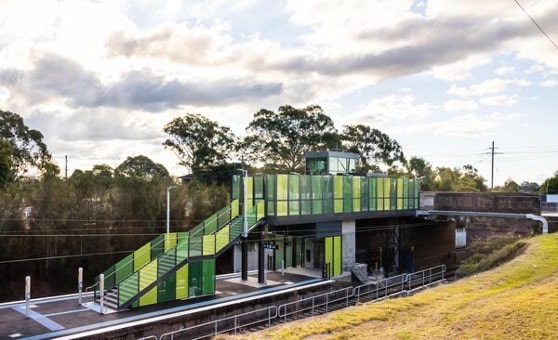
Birrong Station Upgrade
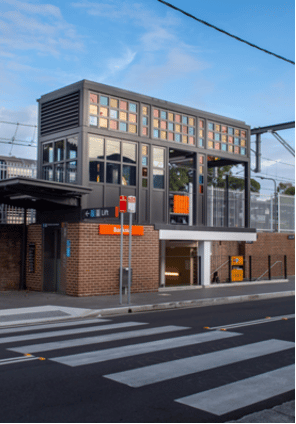
Banksia Station Upgrade
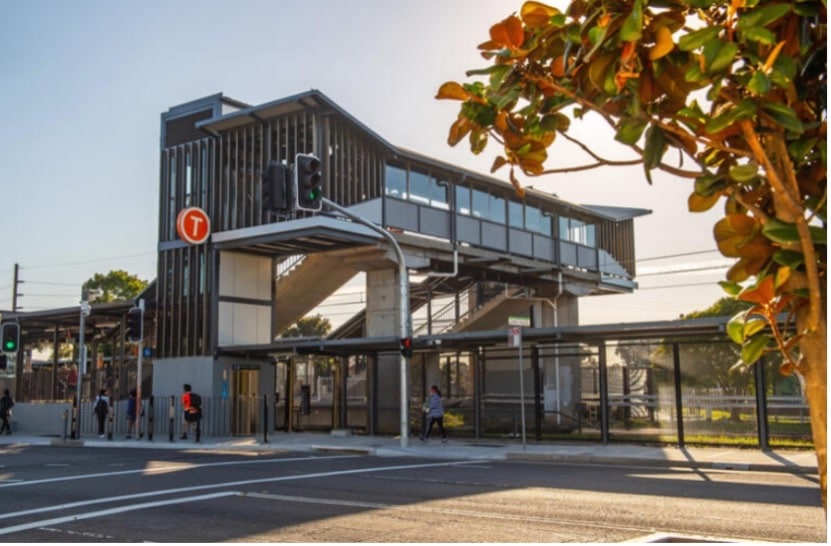
Canley Vale Station Upgrade
Highlight 2 – Heritage focus and rich interpretation of place
Aboriginal mural at Banksia
An opportunity was identified to go above and beyond project and contractual scope. Downer produced a large scale Aboriginal mural at Banksia Station. The Project team worked closely with TfNSW, Bayside Council and the Boomalli Aboriginal Artists Cooperative to organise a permanent installation. The painted mural allowed the legacy of the station to continue to be lived and enjoyed where there was previously no Acknowledgement of Country. Artist Danielle Mate designed and painted the 10m x 6m mural known as ‘Layers’ in early 2022 to speak to the Gweagal, Gadigal and Bidjigal clans who influence within the local area. The mural has received astounding positive feedback from the community and local press. The legacy will continue to influence for many years.
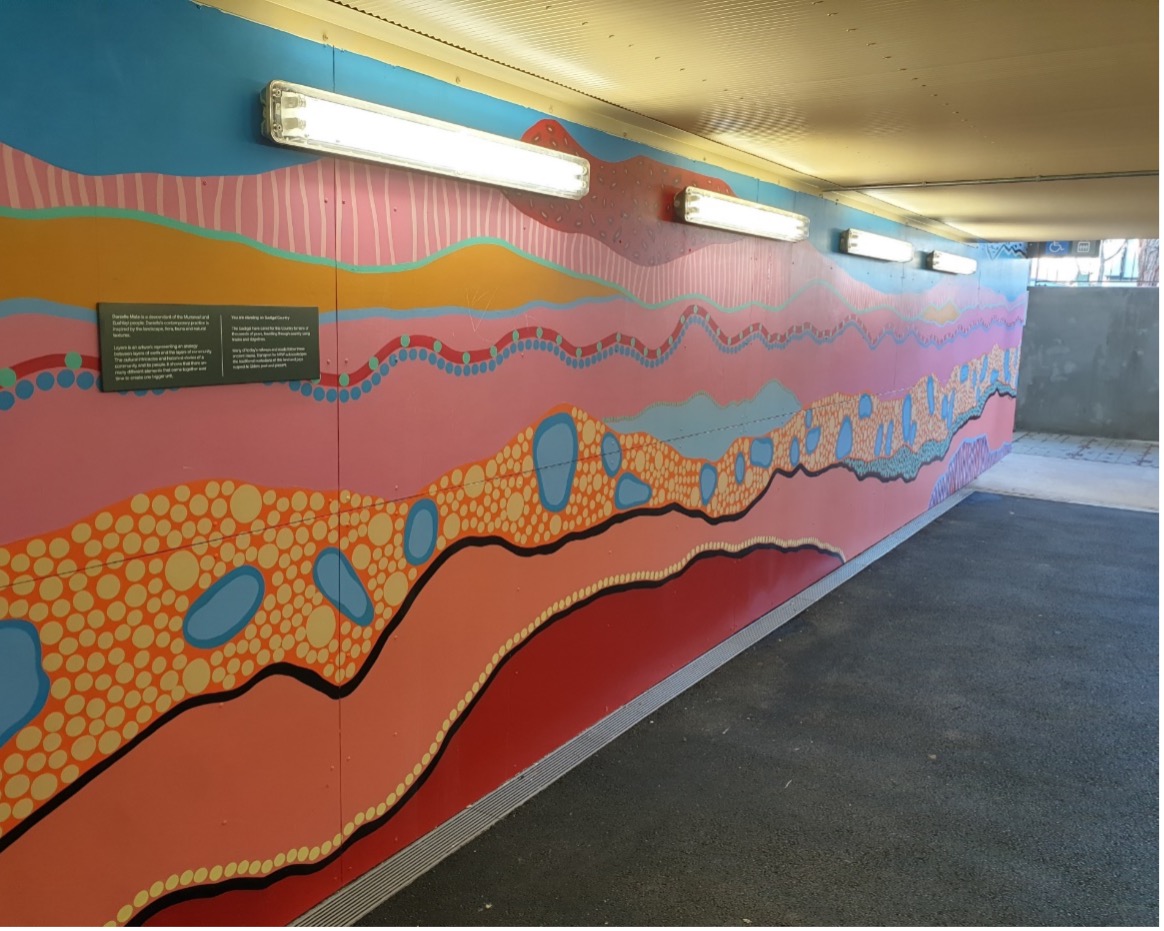
Aboriginal mural installed at Banksia Station
Banksia’ storms and station masters
An interpretive sign installed in the Banksia underpass pays homage to the station’s long history of storms and station masters. Since the construction of the original underpass in the 1920s, it has been prone to flooding during heavy rainstorms.
Though Banksia Station’s history includes many flooding incidents, the actions of station staff over the decades have ensured the safety and dry feet of the community.
Now that the Upgrade Project is complete and intelligent flood mitigation implemented, flooding is no longer a problem for Banksia Station with zero closures or community delays even with the extreme floods and weather events that have been battering Sydney for months.
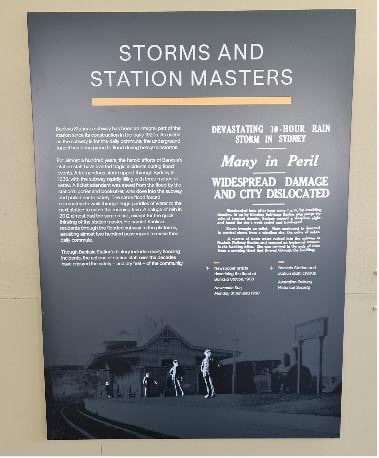
Interpretative sign installed at Banksia Station
Roseville heritage interpretation initiatives
Several historical themes emerged for Roseville Station, including:
Landscaping and signage for the Garden Station – The Roseville Station gardens have been a source of community pride for over one hundred years. Landscaping and signs have been installed.
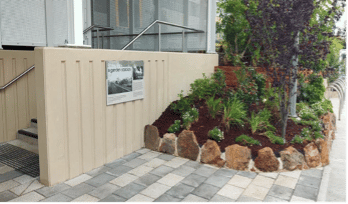
Roseville Interpretation landscaping and signs
Plaque installation for the Police Call Box – close to Roseville Station a small structure which today is used as bike shed was previously a Police Call Box. In a collaboration between Ku-Ring-Gai Council, TfNSW and Downer, the story of the shed was highlighted with a plaque.
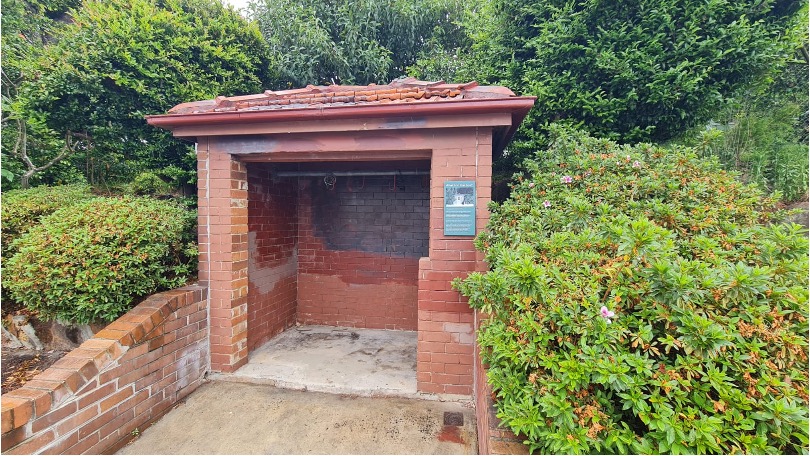 Roseville Police Call Box
Roseville Police Call Box
Installation of acknowledgement of Gammeragal Country
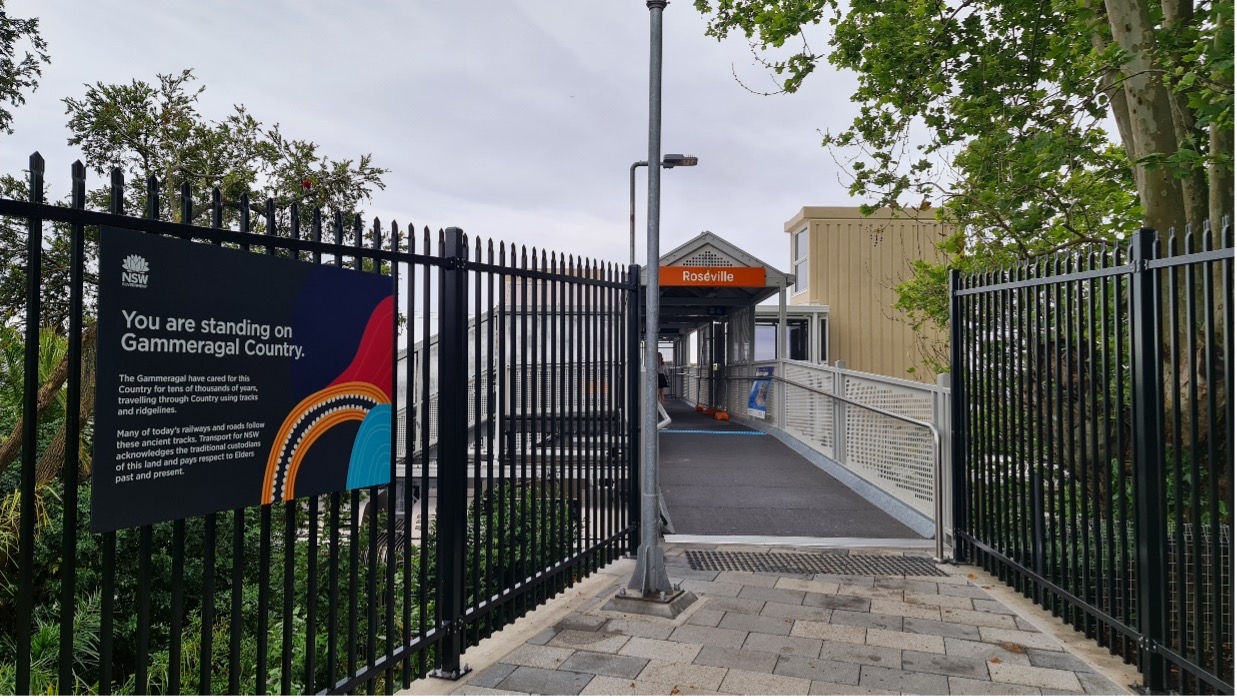 Acknowledgement of Gammeragal Country
Acknowledgement of Gammeragal Country
IS Council Awards Finalist in ‘excellence in social outcomes’
In recognition of the social impact of the extensive heritage consideration and interpretation across the sites, the Project was confirmed as one of four finalists within the Infrastructure Sustainability Council Award for “Excellence in Social Outcomes” at the ISC ReConnect Conference in March 2022.
Highlight 3 – Bush regeneration within Smoothey Park
As part of the Wollstonecraft Station Upgrade Project, the project successfully reduced the number of trees removed during design development and creative engineering. Unfortunately, a few trees at the station still needed to be removed to allow the installation of the lifts and associated walkways.
The Project was required to replant 25 trees (or equivalent). An opportunity was identified to go above and beyond the project requirements and to work closely with North Sydney Council, as well as a locally owned and run bushland restoration company Toolijooa, to regenerate the natural bushland directly adjacent to the train station, Smoothey Park. Ultimately, about 400 plants have been installed as part of the works, including vital riparian restoration, weeding and planting of native locally endemic species.
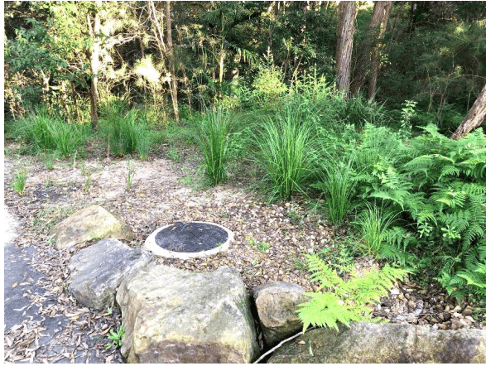
Section of revegetation and landscaping within Smoothey Park

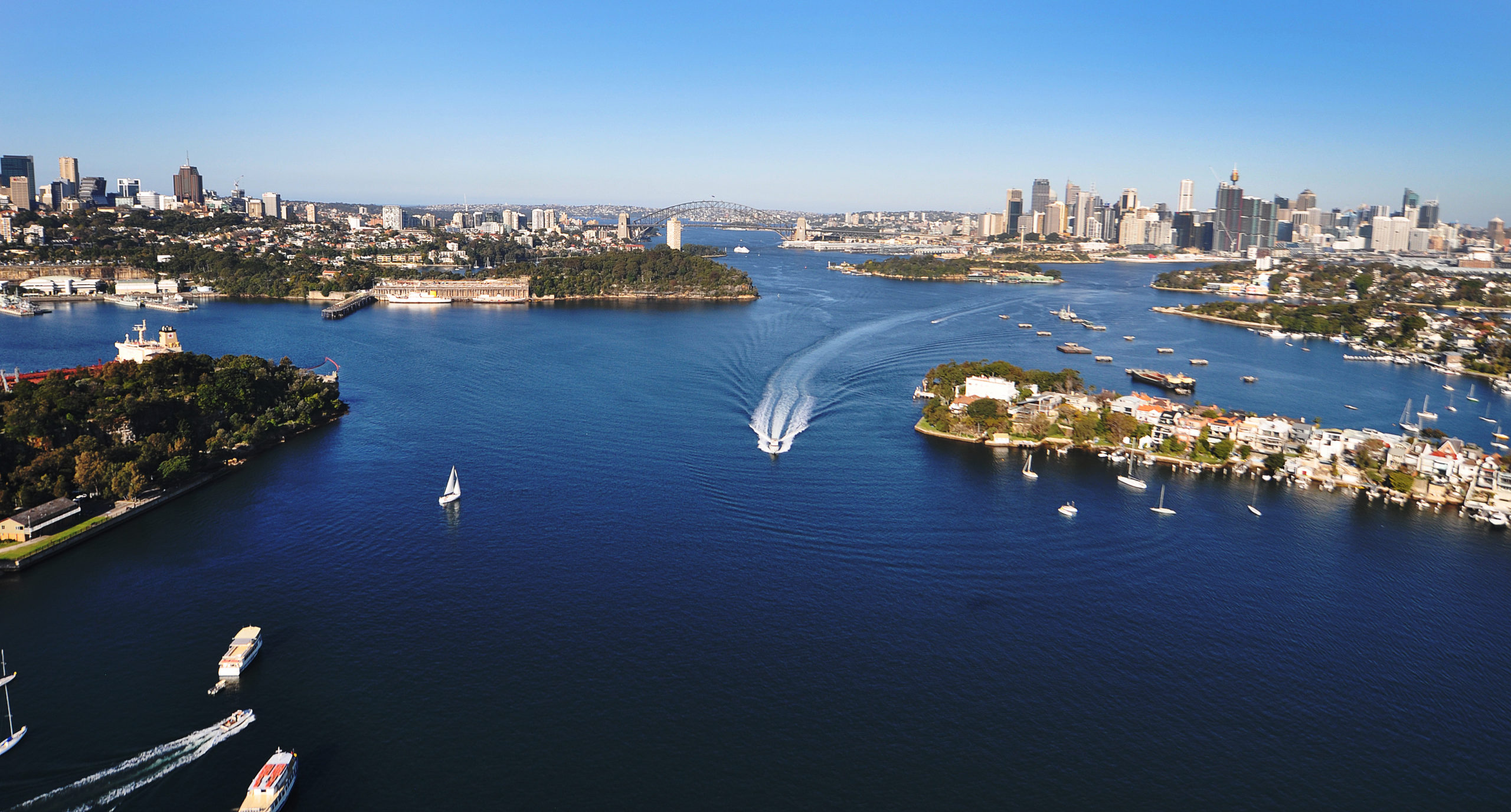

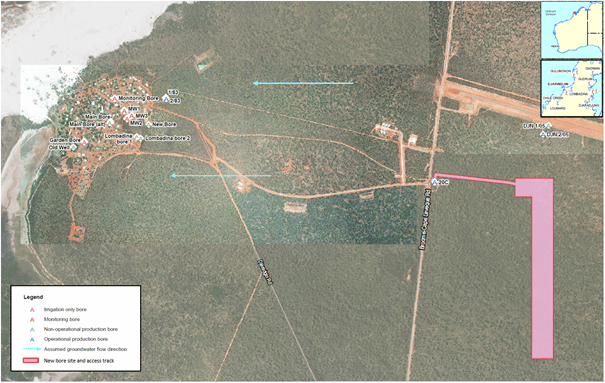
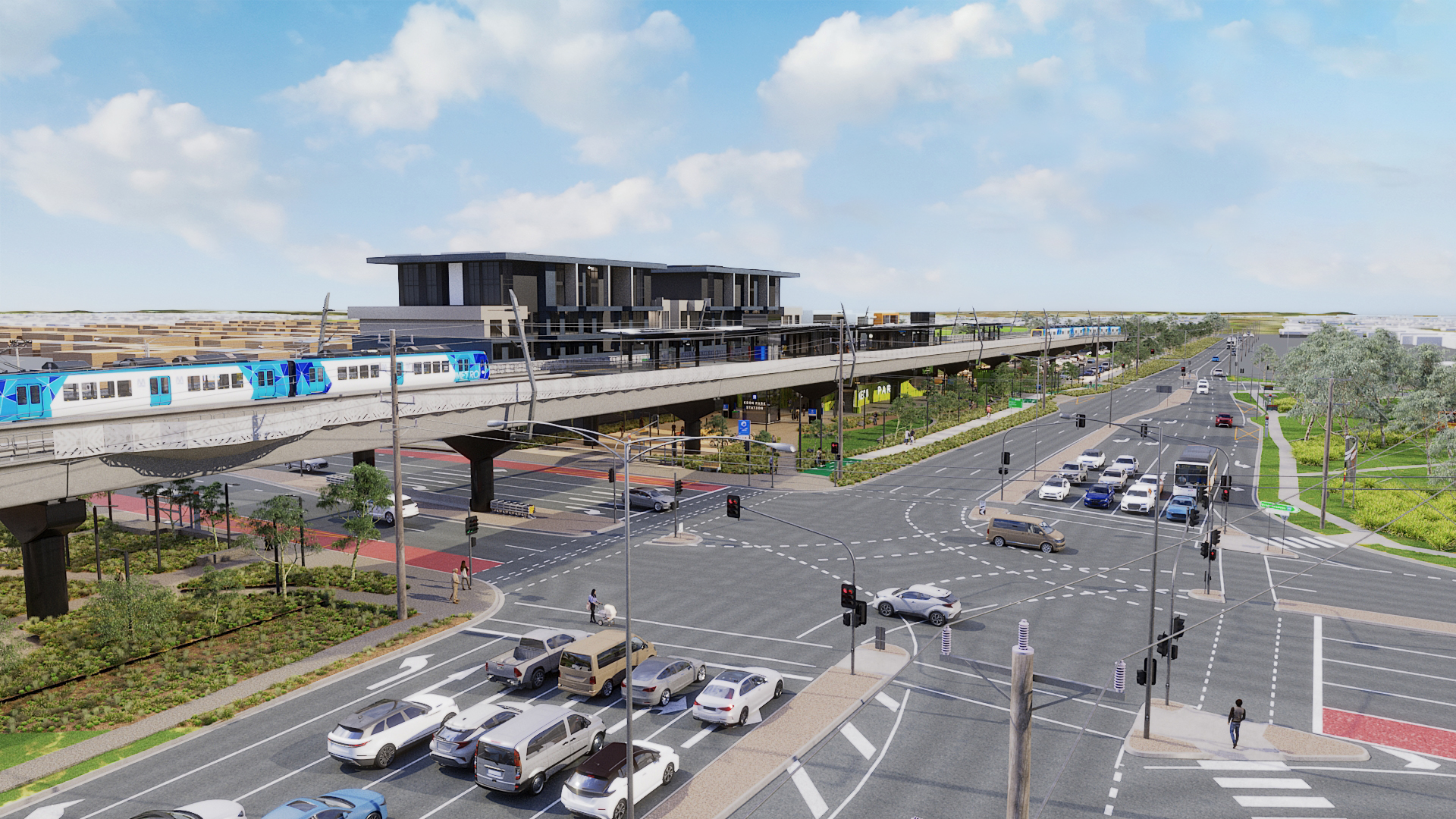
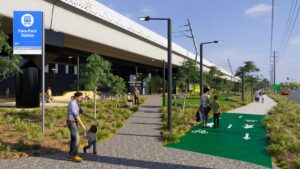
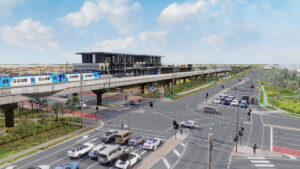
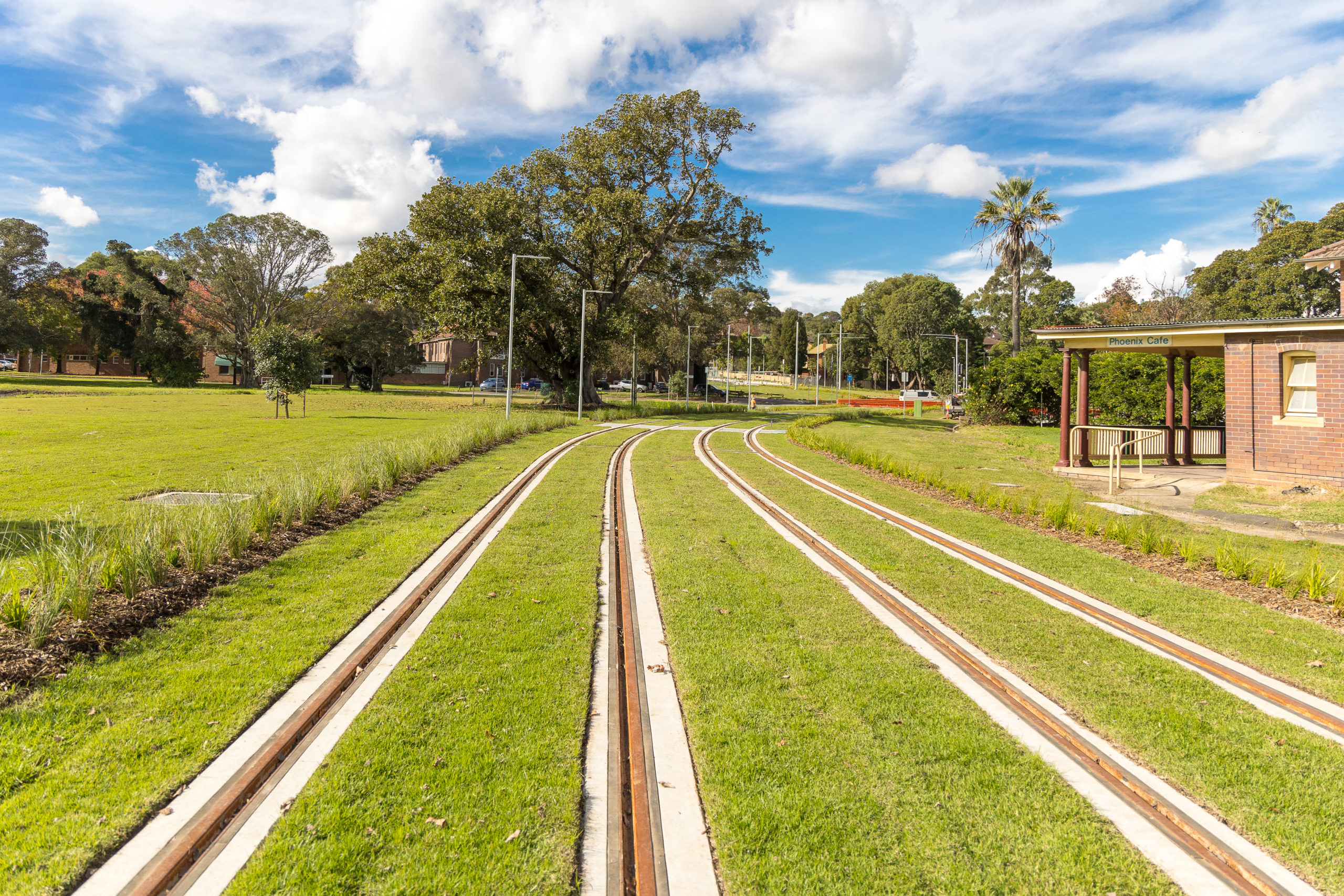
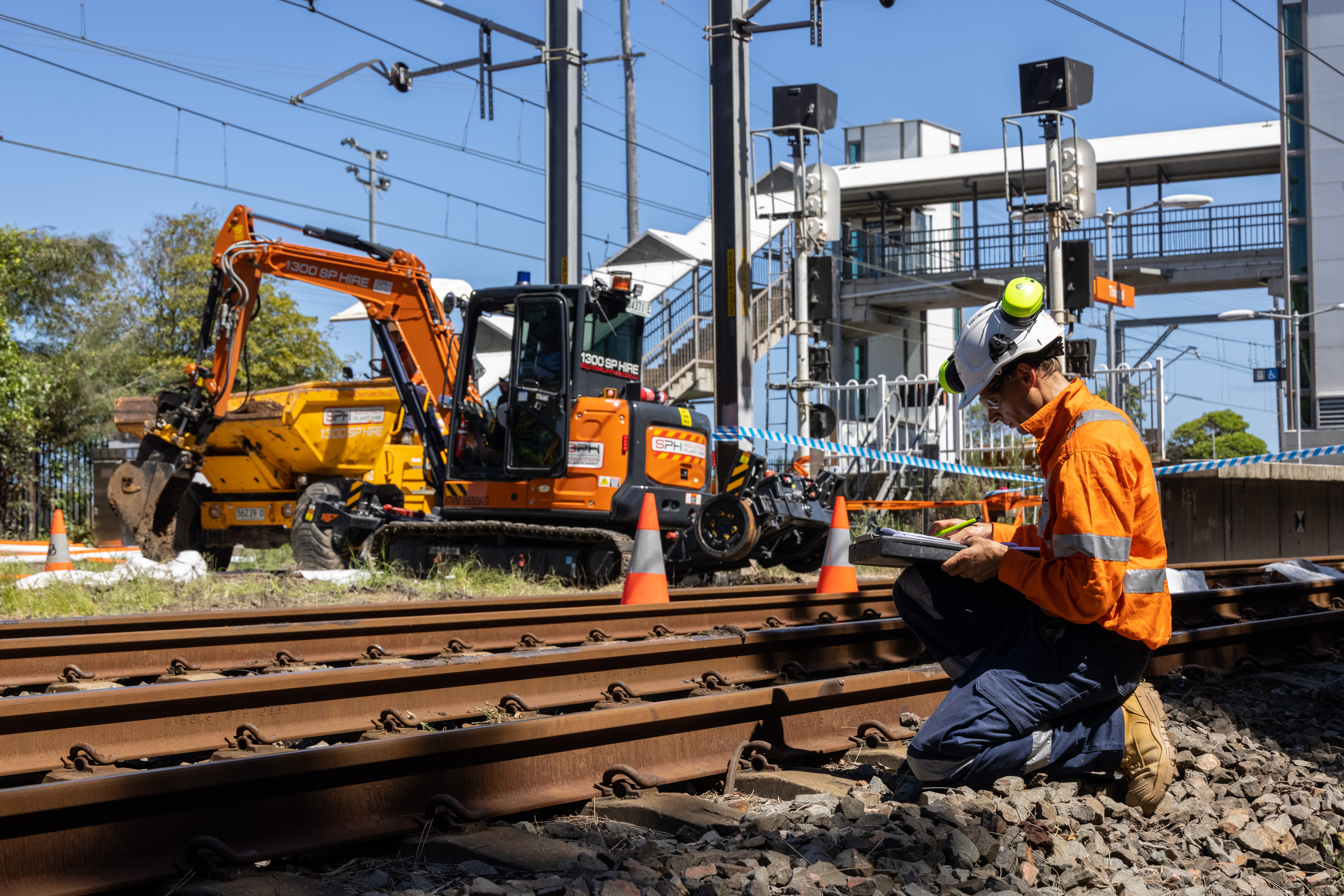
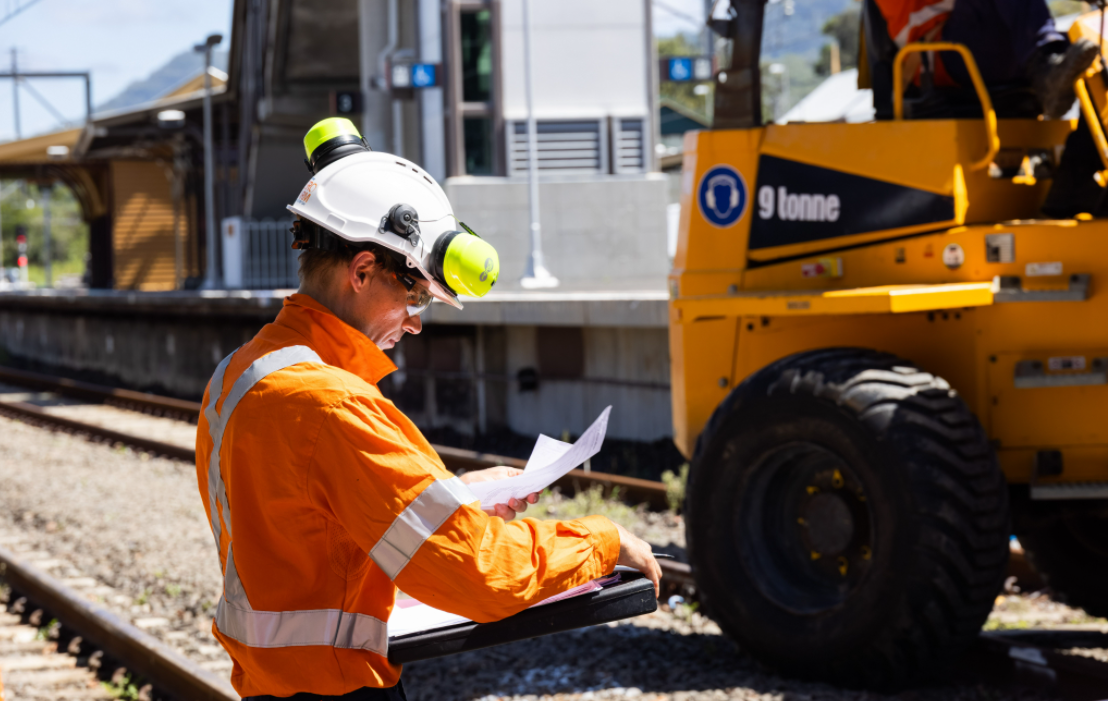
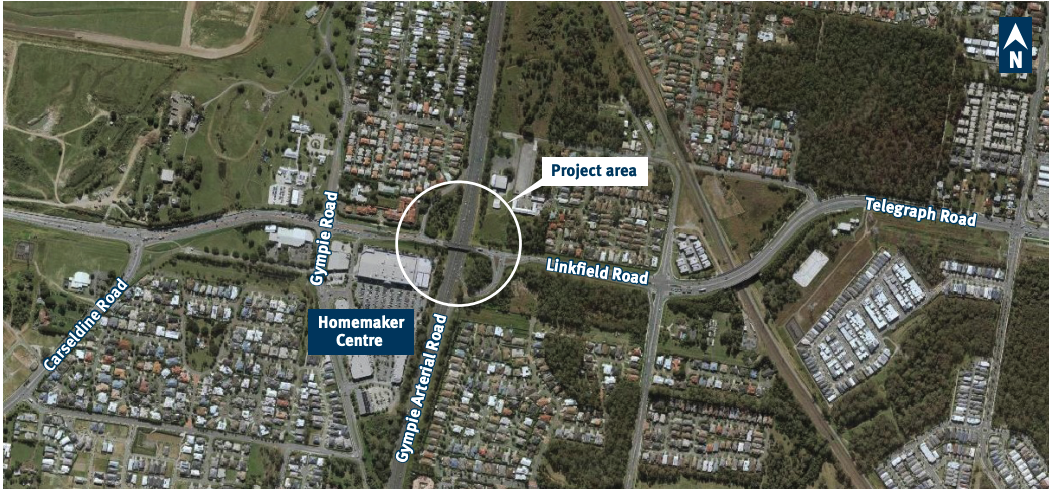
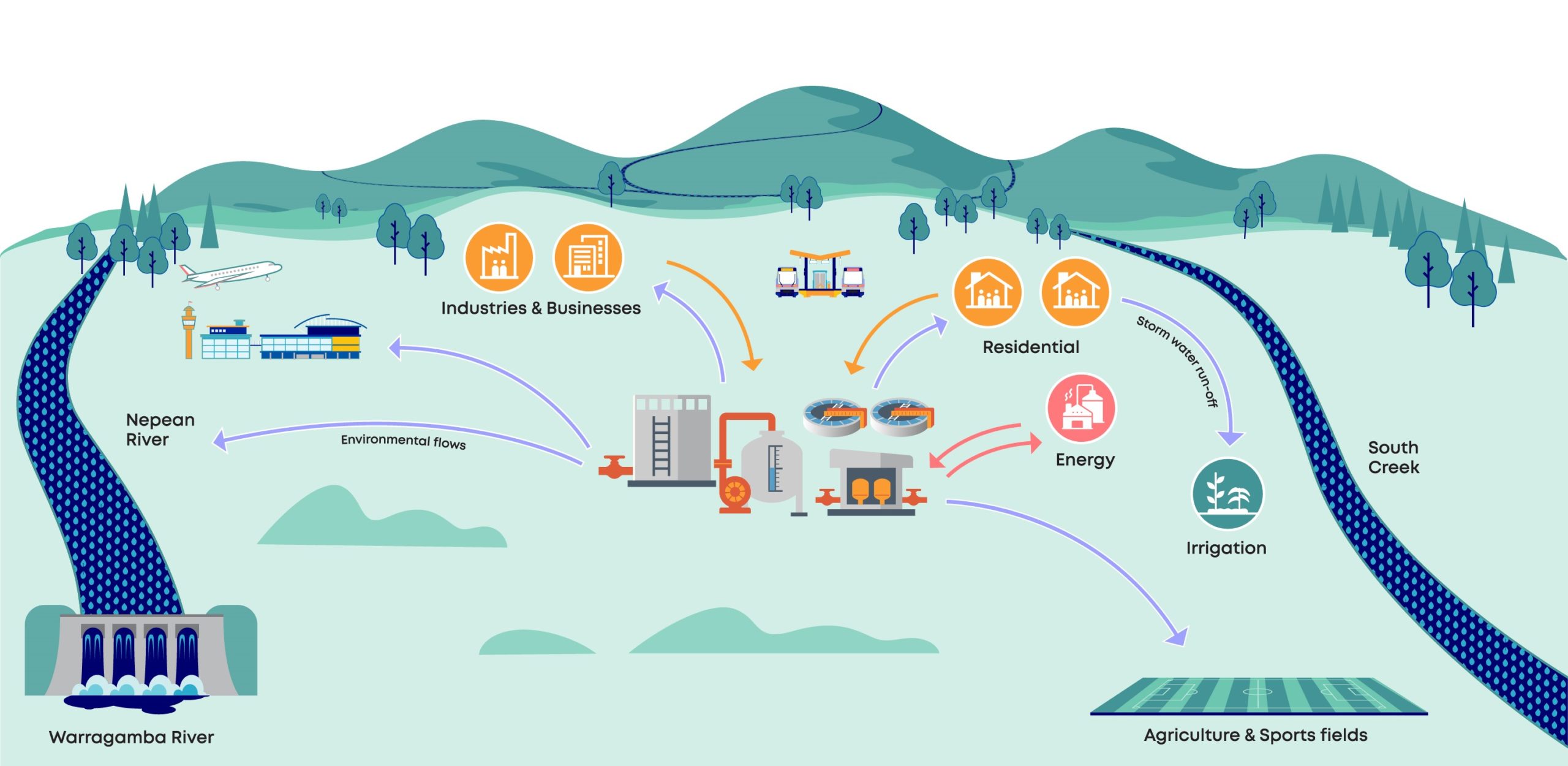






 Roseville Police Call Box
Roseville Police Call Box Acknowledgement of Gammeragal Country
Acknowledgement of Gammeragal Country
